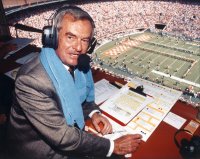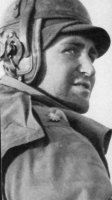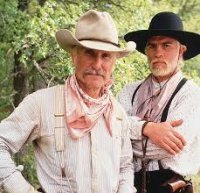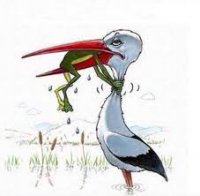OneManGang
Senior Member
- Joined
- Sep 7, 2004
- Messages
- 2,040
- Likes
- 9,685
Tennessee vs The Maxims vs Florida State vs The National Championship - 1999
DATE: 4 January 1999
PLACE: Sun Devil Stadium, Tempe, Arizona
ATTENDANCE: 80,470
FINAL SCORE: Tennessee 23 Florida State 16
There is, of course, only one game that could wind up this little jaunt down Memory Lane. The 1998 season is ingrained in the memories of those of us old enough to remember. After 47 years of waiting. Forty-seven years of struggle in the Southeastern Conference, our University of Tennessee Volunteers sat atop the college football world as national champions.
It is sobering for we graybeards, though, to realize that no player on the current edition of the Vols was even ALIVE when this happened. In many instances, their parents hadn't even met on that magic night in Tempe.
The game was also a watershed event for we fans as it was the last time John Ward would call a football game.
My friend @peaygolf has a thread at the top of the page counting down the top 250 Vols of all time. My personal nominee for #1 is John Ward. The word pictures he painted during football and basketball games and the “Ward-isms” he left us are a huge part Vol lore. “It's football time in Tennessee!” “Willie Gault. Ladies and gentlemen, is running all the way to the State Capitol!” “Powell just comes ROARING up the greensward of the Superdome!” “Give him SIX!” “NO SIR EEE! … Pandemonium ... reigns!” “Bottom!” “... and the kick is … GOOD-AH!” “What say you, Bill Anderson?” “You walked, Sir.”
And, of course, “Touchdown, Tennessee!”

As I type this, I am looking at two framed items in a place of honor on my wall. One is a signed photo from the man himself, and the other is a very nice personal letter to Yours Truly that accompanied the picture.
That photo came about because our own CharterVol was having lunch with Ward and some of the guys from the Vol Network. Charter mentioned that one of his friends (me) was recovering from major surgery. Ward said one of his close friends had recently had the same surgery and asked for my address.
He was that kind of man.
Ward graduated from UT Law in 1954. He never practiced law but went into advertising and public relations where he quickly established himself as one of the best ad men in Tennessee. He continued calling high school games and filling in for Tennessee basketball on occasion. In 1965, he became the permanent voice of the basketball Vols. In 1968, he was teamed with former Vol tight end Bill Anderson for the upcoming football season and a legendary broadcast duo was born.
Ward always wore a blue towel around his neck during broadcasts. It became an icon. He started it while calling an away basketball game at Mississippi State. It was chilly that night and a cold breeze was hitting his seat and his throat began to feel the effects. He sent someone down to get a towel from the UT bench. Tennessee came back to beat the (Allustrous) Bulldogs, (GRRR!) and he wore a towel for every broadcast after that as a good luck token.
Over his 31-year career as Voice of the football Vols, Ward called over 350 consecutive games.
He continued his advertising career and became quite wealthy. In 1994, he and his beloved wife Barbara made a $2 million donation to the UT Athletics Dept. at that time it was the largest single donation in UT history.
During an interview in the mid-1990s, Ward was asked about stepping down. He talked of reviewing every game broadcast. He then said when his broadcasts didn't meet his standards he would know. He then said, “I will simply say, It's time.”
At a presser before the 1998 season, Ward stepped to the podium, unfolded a sheet of paper, and said, “I have a prepared statement, I shall read it in its entirety.” (pause) “It's time.”
He then stepped away,
He was that kind of man.
As Ward and Anderson went through their pregame comments, elsewhere in the press box ABC Sports had set up shop. Once again, the estimable Keith Jackson would do the play-by-play with legendary Miami Dolphins quarterback Bob Griese providing commentary. Already, Jackson was slobbering over FSU head man Bobby Bowden, He echoed Bowden's declaration that the Seminoles were “a team of destiny” because of the fact that the two teams between FSU and Tempe both lost in their last games. He also waxed poetic about Seminole wide receiver Peter Warrick and defensive back Dexter Jackson. Jackson pointedly reminded everyone that Tennessee, despite their perfect record, was a 6-point underdog.
Tennessee had posted an impressive 12-0 record including a 24-14 defeat of Mississippi State University (Home of the allustrous Bulldawgs! Grrr!*) to claim the SEC Championship. Florida State boasted an 11-1 record with the only blemish being a loss to NC State in the second game of the season. One concern for the Semi-holes (h/t Leonard Post Toasties) was that starting quarterback Chris Weinke had been injured against Virginia and backup Marcus Outzen stepped in for the balance of the season. FSU's fearsome defense, though, made up for any offensive shortcomings.
Tennessee took the opening kickoff and drove down the field, aided by a roughing the punter call, but came up short when Jeff Hall missed a 33-yard field goal. The first quarter remained scoreless with Tennessee driving again deep into Semi-hole territory only for Travis Henry to fumble. Florida State made some decent plays but shot themselves in the foot with penalties and other miscues. The 1st canto ended with Tennessee in scoring position after a 76-yard strike from Tee Martin to Peerless Price.
End of 1st Quarter
Tennessee 0 Florida State 0
The offense stalled and Jeff Hall nailed a 24-yard field goal but the Seminoles managed to hit him and were flagged for roughing. UT decided to wipe off the points. Martin then found Shawn Bryson out of the backfield who shot into the end zone.
Time 14:05 2nd Quarter
Score: Tennessee 7 Florida State 0
A 29-yard throw by Outzen set up the 'Noles on their own 49. His subsequent pass aimed at Warrick instead landed in the hands of Tennessee's #23 who then set sail and took it 54 yards for the score. John Ward exulted, “Dee Wayne Goodrich! Playing Warrick, played it perfectly!”
Time 13:40 2nd Quarter
Score: Tennessee 14 Florida State 0
After an exchange of punts, Tee Martin threw an interception and the Seminoles took over on the Tennessee 3. FSU then scored on a 1-yard run by William McGray. Semi-hole kicker Sebastian Janikowski bounced the extra point attempt off the crossbar.
Time 8:59 2nd Quarter
Score: Tennessee 14 Florida State 6
As time was expiring in the 1st half, FSU drove to the Tennessee 24 but stalled and Janakowski hit a 34-yard field goal.
Time 01:17 2nd Quarter
Score: Tennessee 14 Florida State 9
The third quarter was a defensive duel and wound up scoreless.
About half way through the fourth quarter, Tee Martin faded to throw. He launched the ball which was caught by Price who outran everyone for a 79-yard touchdown. Price recalled later that the ball just seemed to be coming down a chute and he had no choice but to catch it. Hall's PAT was blocked.
Time 8:59 4th Quarter
Score: Tennessee 20 Florida State 9
On FSU's subsequent possession, Outzen was sacked and fumbled the ball. Billy Ratliff reprised his Arkansas feat and recovered. Tennessee drove down to the 13 before stalling. Jeff Hall stepped up and nailed a 23-yard field goal.
Time 6:01 2nd Quarter
Score: Tennessee 23 Florida State 9
The Seminoles refused yield, however. Their ensuing drive ended with a 7-yard scramble by Outzen for a touchdown.
Time 3:42 4th Quarter
Score: Tennessee 23 Florida State 16
Vol fans took in a collective gasp as Travis Henry fumbled deep in FSU territory with less than two minutes left. However, Steve Johnson stepped in front of an Outzen pass, and that, as they say was that.
John Ward counted down the last seconds and ended his last game call, “The National Champion is clad in Big Orange!” A more fitting finale could not have been scripted.
Final Score
Score: Tennessee 23 Florida State 16
*******
Abe wasn't a bit surprised to get the call.
There was Big Trouble to the North. A half-million Krauts with 1500 tanks had attacked and the key to stopping them was to hold a small Belgian crossroads named Bastogne. The 101st Airborne and part of the 10th Armored Division were cut off there and if they didn't hold the situation would be grim indeed. Ike and Brad needed help, and in One Big Hurry. Abe knew that whenever Ike or Brad needed something done in One Big Hurry, they always called Georgie, who did most everything in One Big Hurry. For his part, whenever Georgie needed something done Right The Hell NOW, he called Hugh. Whenever Georgie gave Hugh The Word that he wanted something done Right The Hell NOW, Hugh generally called Abe.
Abe was a Lieutenant Colonel, the Big Boss of the 37th Tank Battalion, at this point part of Combat Command “R” of the 4th Armored Division.
Abe wasn't just a battalion commander, he was a force of nature. Like all great leaders, no matter how hard he pushed his men, he pushed himself just that much harder. At a time when most battalion CO's rode about in jeeps and stayed “in the rear with the gear,” Abe had a personal M4 Sherman command tank named “Thunderbolt.”
One of his tankers noted, “Abe's tank doesn't roll ahead like the others, it gallops.” Abe also had a commander's greatest gift: he could literally carry a map of the battlefield in his head and simply KNOW where his tanks were in a fluid and confused situation and to be able to issue clear, concise orders on the fly to accomplish the day's mission. An infantry officer whose company was assigned to a task force under Abe said of him simply, “(F)or some indefinable reason you immediately had a sense of confidence, and you immediately had a sense of dignity. You immediately had a sense that there was a leader here.”
When the call came, Abe and the 37th tanks were heavily engaged in an offensive into the Saar region along the Franco-German border. One of Abe's companies was supporting an infantry outfit in dire need but Georgie told Hugh, “Get them rolling NOW.” Abe radioed his tankers, “That's it. GO! You can't stay any longer – you're needed.” Abe's battalion now redeployed with the rest of 4th Armored and made ready to slam into the German left flank. Typically, Abe ordered his units to resupply and refit as much as possible while rolling. Fifteen hours later, despite snow, fog, and ice the 37th moved into its final assembly area 120 miles from where they had been that morning.
American armored divisions in World War II adopted a flexible organizational plan in which a division was divided into three “combat commands” labeled “A,” “B,” and “R.” CCA and CCB were the prime fighting units. The division's battalions would rotate from CCA or B back to CCR (“R” for “reserve”) to rest and refit. CCR also could serve as a mobile “fire brigade” to backstop one of the others if needed.
Now CCA and CCB moved to the attack along the road from Arlon, Belgium to Bastogne.
Both units found themselves stymied by strong German defenses in a narrow defile and the attack bogged down. Hugh now ordered Col. Wendell Blanchard to send in his CCR as a task force made up the 37th Tanks, the 53rd Armored Infantry Battalion and the mobile guns of the 94th Field Artillery to move to the far right of the 4th Division as there were reports of a strong panzer force somewhere Out There.
The German tanks never materialized.
Georgie was chafing at what he perceived as the torpid pace of 4th Armored's advance up the Arlon/Bastogne road. He called Hugh and told him in no uncertain terms to get his attack cranked up and get it cranked up Right The Hell NOW! Hugh had one unit not heavily engaged and called Col. Blanchard and gave him the Word. CCR would now shift from the far right of 4th Armored to the far left to a town named Neufchateau and attack down a smaller road, bypass the German resistance hindering CCA and CCB and break through to the stranded men in Bastogne. Abe would be in overall tactical command.
Abe was down to twenty-one operational Shermans out of an authorized strength of fifty-four. Many of these were also short on crewmen and made do with four instead of the normal five. Abe could call on the light tanks of Dog Company, but these were useless for slugging it out with panzers or dug-in infantry. The total also did not count the five assault-gun Shermans assigned to every tank battalion with their 105mm howitzers for rapid-response artillery.
In any event Abe and the infantry of the 53rd moved out. In the words of Abe's biographer, “in a matter of perhaps seventy-two hours, the elements of Reserve Command had trailed along in reserve, attacked on the axis of one of the leading combat commands, moved to the extreme right of the division to ward off a heavy enemy armor formation, withdrawn from that position to the division rear, and swung all the way around to the left flank to attack again toward Bastogne. It was cold, it was wet, it was slippery and by this time they were damned mad as well. So much the worse for the Germans. It was also Christmas Day.”
Abe almost didn't make it to Bastogne. He was using his Jeep to move about during a break when it ran over an American land mine destroying the Jeep and seriously injuring his driver. The minefield had been hastily laid and not shown on any map. In any event, by dusk on the 25th, Abe's task force was less than six miles from Bastogne.
The next village up the road, Remichampagne, was known to be heavily defended and plans were made to assault it on the 26th. The 26th dawned clear and cold and a flock of P-47 Thunderbolt fighter-bombers screamed down and bombed and strafed the town just a few hundred yards in front of the tanks. The shocked Germans gave way relatively easily. At 1500, the task force was ordered to take Sibret, yet another well-defended village to the left of the road. Abe and the CO of the infantry had a quick conference on the roadside and decided to ignore the orders and smash through the village of Assenois astride the road and on to Bastogne. This was serious. Abe was violating a direct order from his commanding officer in order to achieve his primary objective. If he failed he could face a court-martial.
Abe didn't hesitate. He climbed aboard “Thunderbolt,” gave the “Forward!” signal and charged off behind the tanks of C/37 and in front of the infantry of C/53 in halftracks. Abe called artillery on the town and the tanks charged in blasting everything in sight. There were four tanks of C Company in the lead followed by a halftrack which had found its way into the column. The four Shermans in front were led by Lieutenant Charles Boggess. Boggess' tanks charged on, spraying both sided of the road with cannon and machine-gun fire and killing a number of Germans, who basically had no idea the Americans were anywhere nearby, before they could react.
Finally, at 1630, Boggess spotted a line of foxholes approximately where the 101st Airborne had said they should be. He leaned out of the turret and yelled, “Come on out, this is the Fourth Armored.” Eventually a figure emerged and said, “I'm Lieutenant Webster of the 326th Engineers, 101st Airborne Division. Glad to see you!” Twenty minutes later, in the center of Bastogne, Abe dismounted from “Thunderbolt” and shook hands with Brigadier General Tony MacAuliffe who had commanded the 101st throughout the siege.
It wasn't over yet. Col. Blanchard, for some unexplained reason, now ordered all of CCR to move inside the Bastogne perimeter for the the night. Abe realized immediately that this would abandon the road so dearly won to various German units now shaking off their confusion and mounting counter-attacks to cut it. Disobeying direct orders yet again, Abe said, “Hell, no. just keep those units where they are.”
The road stayed open.
By 0300, a convoy of much needed food, ammo, gas and other supplies drove into Bastogne. On the way back out, there were seventy trucks filled with wounded.
Georgie wrote in his diary that night, “At 1845 they made contact, and Bastogne was liberated. It was a daring thing and well done. Of course they may be cut off, but I doubt it … the speed of our movements is amazing, even to me, and must be a constant source of surprise to the Germans.”
High praise, indeed.
Abe was now a hero, much celebrated in the press Back Home. Typically blunt, he dismissed the media folderol as, “hopeless drivel.”
Twenty-four years later, the Army again turned to Abe to pull its collective chestnuts out of the fire. On 10 June 1968, General Creighton W. “Abe” Abrams succeeded William Westmoreland as commander of all US forces in Vietnam. By that time, though, the American public was thoroughly sick of it all and his mission was doomed, no matter how well he carried out his part of it.
He deserved better.
After Vietnam, Abe was made Army Chief Staff, now tasked with rebuilding the shattered morale and training of his beloved Army.
Toward the end of his life he remarked, “Nobody will ever know the go**amned mess Westmoreland left me in Vietnam.”
While still CoS, Abe died of lung cancer, despite having never smoked a cigarette (he did smoke cigars, though) in his life, on September 4, 1974 at Walter Reed Army Hospital. He left a half-box of cigars in his office at the Pentagon.
It's still there in mute tribute to one of the finest soldiers this country has ever produced.
There is another tribute. The gold standard for modern main battle tanks in the U.S. Army's M1A2. It is a seventy-ton monster that can out-shoot, out maneuver and just plain beat the crap out of any other armored vehicle on the battlefield.
It bears the name “Abrams.”
Nothing could be more fitting.
Now you know why.
********
So, how did the Vols do against The Maxims?
1. The team that makes the fewest mistakes will win.
Both teams committed more than their quota of stupid penalties. In the end, though, the Vols played within themselves and patiently waited for big plays which were the difference in the game.
2. Play for and make the breaks. When one comes your way … SCORE!
The Vols capitalized on FSU mistakes and then made plays when they were needed.
3. If at first the game – or the breaks – go against you, don't let up … PUT ON MORE STEAM!
The Vols refused to be intimidated by FSU's talent and speed. The Vols dug deep to stop FSU at the end of the game and brought the big trophy back to Knoxville.
4. Protect our kickers, our quarterback, our lead and our ballgame.
FSU's main offensive weapon coming into the game was the blindingly fast and talented Peter Warrick. Tennessee held him to one catch all night. On the flip side, Peerless Price had 199 receiving yards.
5. Ball! Oskie! Cover, block, cut and slice, pursue and gang tackle … THIS IS THE WINNING EDGE.
Tennessee got two interceptions. While the Vol running backs only wound up with 114 yards total, they forced FSU to respect Tennessee's running game and set the stage for big plays by Martin and the Vol receivers.
6. Press the kicking game. Here is where the breaks are made.
Nobody really covered themselves in glory. However there was a huge redemption for Vol punter David Leaverton who stopped Peter Warrick as the latter had broken free on a return and was on his way to the end zone,
7. Carry the fight to Miami and keep it there for sixty minutes,
“The National Champion is clad in Big Orange!”
Thank you, John.
LTC Creighton Abrams, CO 37th Tank Battalion, 1944 (US Army)

Last edited:




